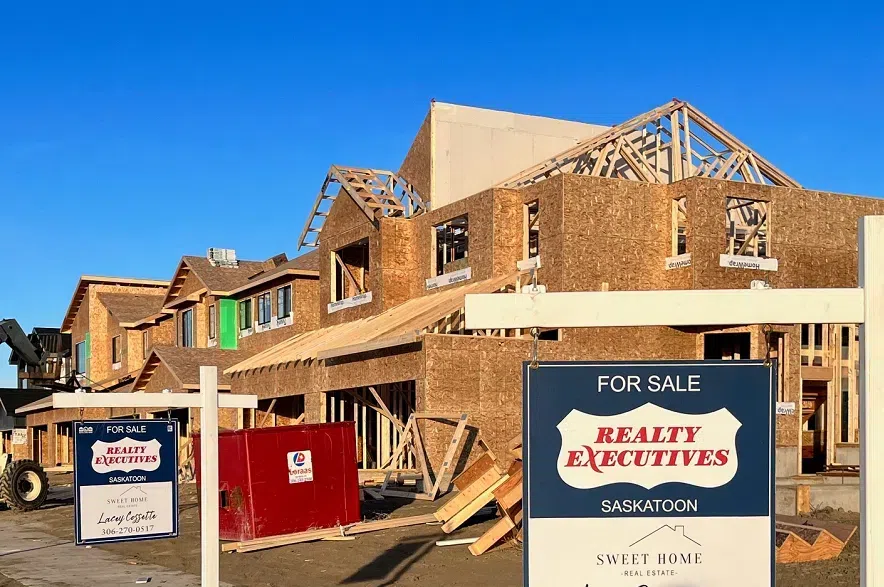Saskatchewan is updating its rules when it comes to building homes in areas that could potentially flood.
On Thursday, the Government of Saskatchewan announced an update to the Planning and Development Act, 2007, to align with guidelines put in place by the federal government.
Read more:
- Red hot housing market has buyers competing hard across Saskatchewan
- Flash flooding hits Saskatoon’s east side during Sunday storm
- Saskatoon’s water director says storm pond helped mitigate flooding after Sunday rainstorm
Previously in Saskatchewan, if a developer wanted to build a home close to a body of water, they would have to have it mitigated and prepared for a one-in-500-year flood event. Now, that number has been dropped to prepare for a one-in-200-year flood event.
The federal government made the change back in April, and now the provincial government is doing the same.
The move aligns the provincial government with the federal government’s Disaster Financial Assistance Arrangements, which can be used to assist provinces and homowners impacted by large-scale disasters like flooding.
Joe Hargrave, reeve of the RM of Corman Park, said he thinks that updating the rules will help strengthen developers’ ability to plan and build properties closer to water.
“The change from one-in-500 to one-in-200 is a huge change,” said Hargrave.
A one-in-200 year flood risk has a 0.5 per cent chance of happening.
Because Saskatchewan’s rules didn’t previously align with what the federal government’s, Hargrave said property values in some areas had dropped, and that didn’t sit well with residents.
“It was a big financial burden to a lot of them,” Hargrave said.
“With the one-in-500, their property values actually went down, so this will help bring those property values back up to some degree.”
Hargrave has been the reeve of Corman Park since November, and said he’s been hearing concerns about the provincial policy for a long time.
Chris Guérette, CEO of the Saskatchewan Realtors Association, said the change will create more certainty.
“As soon as you have various levels of government that are starting to mesh and align, it becomes a lot easier for the homeowner or the property developer,” she said.
“Anybody who’s buying a property, if they go to their municipality, they go to their province for additional information about maybe developing that property, they’re going to get that same answer,” Guérette added. “They’re going to know exactly where they stand with their property or their future property. This is good news.”











